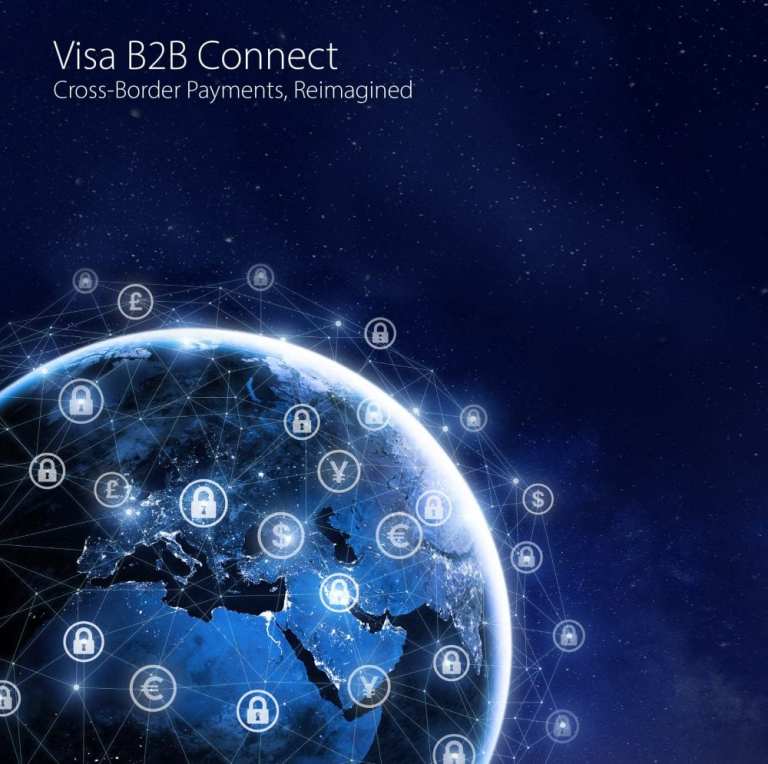
Visa announced today that Visa B2B Connect is live in 62 countries, and has added Infosys as a new integration partner. Ahead of the announcement, Karen Webster spoke with Alan Koenigsberg, senior vice president and global head of New Payment Flows, Visa Business Solutions, about the roles that partner collaboration and simplified technology will play in achieving Visa’s goal of expanding the Visa B2B network to more than 100 countries in 2020.
When Visa’s global head of Business Solutions Kevin Phalen opened up this year’s PYMNTS B2B Payments Executive Forum, he made the case that the B2B payments arena is in the midst of a transformative shift. Innovation, he argued, is being driven by several factors, including banks’ willingness to invest in new infrastructure, and service providers’ ability to take advantage of benefits more than one payment rail has to offer.
Visa itself is part of that “convergence of payment rails,” as Phalen explained it, having launched an entirely new payment network — Visa B2B Connect — to address the most significant problems and challenges of high-value, account-to-account, cross-border B2B payments.
Today (Sept. 20), Visa B2B Connect announced an expansion of that network, adding 32 new corridors since its June 2019 debut, along with a new integration partner, Infosys. Visa’s new cross-border payments network now operates in 62 countries, with plans to be live in more than 100 countries by the end of next year.

Alan Koenigsberg, senior vice president and global head of New Payment Flows at Visa Business Solutions, spoke with Karen Webster ahead of this announcement to discuss how this expansion reflects FIs’ interest in and enthusiasm for “something new” in the world of cross-border B2B payments. Driving both their interest and adoption, he said, is Visa’s focus on industry collaboration and operational simplicity in integrating this new clearing and settlement network into their existing commercial payments systems.
“We’re creating a brand new network, and we’re bringing on best-of-breed technology companies as integration partner ‘hubs’ that help FIs roll out B2B Connect much more quickly,” said Koenigsberg, pointing to Visa’s latest integration with Infosys as an example of how hub partners like Infosys provide new pathways through which financial institutions can “turn on” Visa B2B Connect.
Infosys is Visa’s third such integration partner. Visa today also announced an update on its collaboration with Bottomline Technologies, allowing financial institutions to connect to Visa B2B Connect through Bottomline’s Universal Aggregator and its application programming interface (API) connectivity capabilities. Earlier this year, Visa B2B Connect also struck a partnership with FIS, whose own financial institution clients can also see their Visa B2B Connect onboarding process streamlined and accelerated.
According to Koenigsberg, allowing financial institutions to adopt Visa B2B Connect either directly, or via one of Visa’s integrated partners, lowers many of the barriers they face to embracing an entirely new cross-border payments network.
“Embedding our technology into their offerings makes it so much easier for financial institutions to shorten the curve, reduce implementation expenses, and go live faster with us,” he said, adding that this strategy also opens the door for all FI’s — from regional to large, multi-national financial institutions, to adopt the solution as well.
“We’re democratizing access to modern, secure and compliant cross border payments rails,” Koenigsberg explained.
A Different Approach To B2B Payments
While integrating Visa B2B Connect into third-party offerings may expand FIs’ opportunity to use the solution, adoption of an entirely new payment network will only occur if those FIs see sufficient value in doing so. Koenigsberg said Visa would bring that value through the design of a wholly different way to make payments cross border — an approach that takes its cues from how the global payments network operates effectively at scale.
“The traditional way global cross-border payments are conducted is on a bilateral basis — bank-to-bank, working its way to the end beneficiary,” he said. “The whole architecture and design of Visa B2B Connect is on a multilateral basis.”
It’s a difference, Koenigsberg said, that can be measured: Transactions across Visa B2B Connect can be completed the same- or next-day, compared to the traditional three to five days it may take today.
Visa B2B Connect also moves data with the messages about the payment, a departure from traditional options in which payments and transaction data often move independently from one another. Further, its digital identity feature tokenizes identities on either end of the transaction to ensure security and regulatory compliance.
At a higher level, however, Koenigsberg explained that the simplicity of how Visa B2B Connect was designed from an integration perspective is what is generating so much of the interest in it.
“You don’t have to necessarily be a large, international financial institution to leverage this for your global cross border payments,” he noted, adding that simple, straightforward integrations are valued by all FIs.
As financial institutions become more selective about where they spend resources when upgrading their cross-border B2B payments services, offering FIs avenues to either on-board to the network directly, or through technology partners, will be key.
It’s a strategy that Koenigsberg said creates synergies and efficiencies as those financial institutions explore their own partnership strategies, too.
Visa B2B Connect intends to offer FIs an elevated alternative to traditional cross border networks. What’s “powerful” about the network, he said, is that banks adopting Visa B2B Connect can — and will — continue to use other networks and correspondents to move money across borders as needed and desired, despite the shortcomings of many of the solutions FIs work with today.
“Legacy clearing and settlement methods have become a hindrance for financial institutions across the globe,” Visa stated in a recently published white paper, “Visa B2B Connect — Cross-Border Payments, Reimagined.” “They are expensive, opaque, and lack the amount of detail needed to process cross-border payments efficiently.”
Over time, as various domestic markets place a greater emphasis on overhauling their national payment infrastructures and prioritize speed, security and transparency of payments, financial institutions will likely eventually become more selective in the technologies and networks they use.
Until then, however, choice is essential, and Koenigsberg noted “there is plenty of room” for Visa B2B Connect to find its footing in the cross-border B2B payments revenue banks generate today.
“Our focus is on getting the network perfect, bringing on partners and clients, and getting the technology right,” he told Webster. “Then, we’ll see the network ignite.”